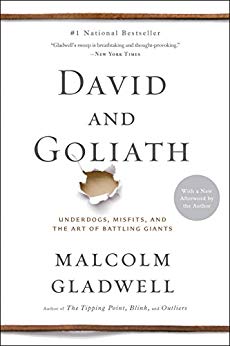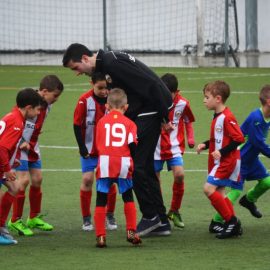

This article is an excerpt from the Shortform summary of "David and Goliath" by Malcolm Gladwell. Shortform has the world's best summaries of books you should be reading.
Like this article? Sign up for a free trial here .
Every parent knows the benefits of smaller class sizes: more attention, higher achievement, and a sense of community, among other benefits. With so much to love, what could be bad about smaller class sizes?
The benefits of smaller class sizes are valuable, but smaller isn’t always better. We’ll look at examples from around the world that demonstrate that it’s possible for a class to be too small.
Benefits of Smaller Class Sizes
Countries (and parents) around the world have devoted vast amounts of money to keeping class sizes small, believing that the smaller the class, the higher the achievement of its students. They know the benefits of smaller class sizes. But the inverted-U curve tells us that smaller classes are only better for students up to a certain point. Do studies bear this out?
Large classes: Kids in large classes, such as those in Israel that regularly have 38 or 39 students, perform worse than those in a class of 20. This makes sense. Smaller class sizes mean more individual attention for each student.
Medium-sized classes: Within a range of moderate class sizes (roughly 13-23 kids), student performance is equal.
But smaller class sizes do not necessarily lead to higher achievement.
Small classes: But with very small class sizes (under 12 kids), anecdotal evidence suggests student learning is impaired. (Much of this evidence comes from polling teachers and collecting anecdotes rather than depending on evidence from rigorous studies.)
The Detriments of Smaller Class Sizes
Why would small class sizes lead to lower achievement?
- In small classes, there is nowhere to hide. Students feel vulnerable, especially the shyest ones.
- Bullies and students with big personalities are more likely to dominate social dynamics in a small class.
- Interactions between students are more intense–they start acting like siblings trapped in a car on a long road trip, and when they bicker, they can’t get any significant distance from each other.
- A small group lacks the energy and momentum that comes with the audience formed in larger classes.
- Small classes can be isolating and lack diversity.
- Small classes may isolate you from others who are confronting the same challenges you are. (A Dutch study showed that the kids who have the best chance of succeeding in school are those who see others grappling with the same issues they are, be they poverty or a learning disability. These children feel less alone and more normal.)
- Conversely, the smaller the class, the less diverse it is—children aren’t exposed to a range of thoughts and experiences.
- It’s more challenging to get discussions going in a small group.
The Inverted-U Theory
The relationship between class size and achievement is one of many that fits the curve of an inverted-U graph. An inverted-U graph is a curve that models the point at which something “good,” like money or effort, starts to make a situation worse. In this case, the “good” that is only good to a certain point is class size. This graph provides a visual for the idea that, while there are numerous benefits of smaller class sizes, small classes can hurt student achievement if they get too small.
Most of us tend to believe that when something is good (like strength, money, or small class sizes), more of it is better. But Goliath’s abundance of size, strength, and weaponry didn’t protect him from David’s rock–it made him more vulnerable. There is a point at which the accumulation of resources ceases to be an advantage and another point at which those resources become a distinct disadvantage. The visual representation of this theory is the inverted-U graph.
The inverted-U graph can represent many relationships. Knowing our lives often conform to its curve, remember that it’s possible to have too much of a good thing. When choosing a school for your child and contemplating the benefits of smaller class sizes, keep in mind that classes can be too small.
———End of Preview———

Like what you just read? Read the rest of the world's best summary of "David and Goliath" at Shortform . Learn the book's critical concepts in 20 minutes or less .
Here's what you'll find in our full David and Goliath summary :
- Why being the underdog can actually be an advantage
- Why you shouldn't be afraid of powerful giants
- Strategies to get an edge when you're overpowered






